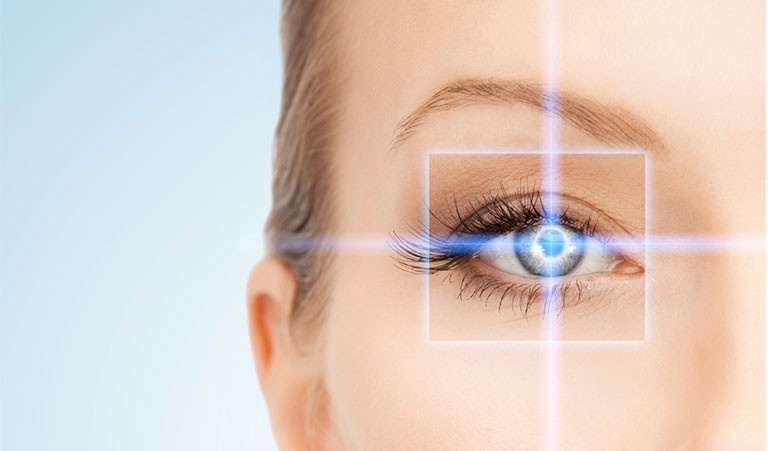
The laser shapes the cornea (the outermost and most transparent part of the eye) to reduce the number of dioptres.
After the application of a few drops of aesthetic, a thin layer of the cornea is lifted by, depending on the characteristics of each patient, the microkeratome or the femtosecond laser, a very sophisticated instrument. This results in a disc or flap that separates from the centre of the cornea to apply the excimer laser directly on the stroma. The laser removes the appropriate portion of the tissue, depending on the correction we desire. In the myopia we obtain a flatter surface, in the more curved hyperopia and in the more regular astigmatism. This phase of the intervention is controlled by a computer and planned by the surgeon according to the characteristics of each case.
The exhaustive preoperative examination allows studying not only the dioptres and the amount of vision, but also their quality, in addition to planning the optimal treatment in each particular case. Currently, we can perform personalized treatments that include the correction of high order aberrations or treatments based on topography.
Once the laser is applied, the corneal “flap” is restored and the intervention is finished by applying a few drops of antibiotic eye drops. The patient comes out with protective glasses and, occasionally, therapeutic contact lenses are adapted to facilitate recovery. These are operations that allow you to recover your vision without using glasses or contact lenses
The new laser systems serve to correct, not only the diopters, but also what we call optical aberrations. These are related to the quality of the vision and must be taken into account so that the operated person sees well during the day, but also at night, when driving a vehicle, when there is little light or to avoid reflections.
Treatments based on aberrometry or the wave front of the eye is called optimized or personalized, because they depend on the characteristics of each type of eye. In these treatments we use sophisticated eye movement control systems for the recognition of the iris, which is the part that gives color to the eye. The laser identifies, in each case, the pattern of each eye, both as a safety measure, and to facilitate the correct application of the laser.
In cases of thin corneas, low graduations, etc., no cut is made, but the outermost layer of the cornea is separated: the epithelium. For this there are different techniques (LASEK, PRK, PTK, EPILASIK). These operations require a slightly longer postoperative period and we call them surface techniques, to differentiate them from the previous ones or lamellar ones.
Generally, the intervention is performed on both eyes during the same session and the whole process lasts about 15 minutes. After a moment of rest, a final examination is performed, instructions are given about the treatment, the appointment for control (usually the next day), and then the patient returns home.
Contact us or request an appointment with our medical team.